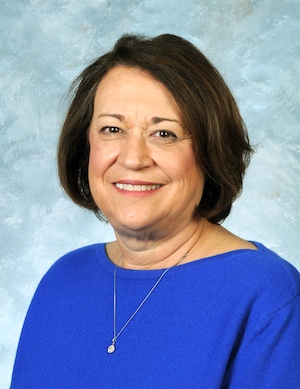FRANKFORT FOCUS
A Legislative Perspective on the Kentucky General Assembly
with State Representative Kathy Hinkle

FRANKFORT – The Consensus Forecasting Group may not be widely known outside of the state Capitol, but these economists nonetheless have an important role to play, since they’re the ones who determine how much revenue state government can expect.
Their chief duty arrives in December of odd-numbered years, when they peer 30 months into the future to come up with projections that the governor and General Assembly must use to write a two-year budget.
The group then meets periodically to tweak its original forecast, determining whether the state can expect a surplus or deficit by the time each fiscal year ends on June 30th. If we’re on track to spend more than we have, steps must be taken to make sure the books are balanced. Unlike the federal government, states cannot carry a deficit forward.
On the Friday before the Memorial Day weekend, the Consensus Forecasting Group came together to review just how much has changed since the coronavirus began upending the world’s economy three-plus months ago.
There was universal agreement the numbers would be unprecedented in modern times, and estimates confirmed they are unlike anything seen since the Great Depression. State revenues that were up nearly four percent through March – three-fourths of the way through the fiscal year – are now more than $450 million in the red. When annualized over a year, that’s a four percent decline.
The Road Fund has taken an even bigger hit. It showed 2.2 percent growth through the fiscal year’s first nine months but now will finish the year 10.4 percent below what was projected.
Under state law, the General Assembly is supposed to be called back into a special session when revenues dip below five percent, and Governor Andy Beshear has promised to do that this month so we can tackle the steep decline in the Road Fund. It’s unlikely we will address general state spending, because the one-year budget enacted in April already gives the governor several options to make up the difference. In January, when more information is in hand, legislators will be in a better position to pass the next one-year spending plan.
Kentucky, of course, is not facing this crisis alone. One national report the Consensus Forecasting Group relied on is predicting the United States’ Gross Domestic Product will drop by seven percent in 2020. The decline for April through June alone, though, is a staggering 26.5 percent.
There’s not a sector untouched by this pandemic. Both home sales and housing starts, for example, were at 13-year highs nationally early this year, but neither is expected to get close to those numbers again until at least 2022.
In April alone, meanwhile, state and local governments reduced their workforce by 981,000, which far outpaced the 750,000 jobs these governments cut over the first several years of the Great Recession.
Here in Kentucky, the state’s Center for Statistics recently showed that the arts, entertainment and recreation sector saw the biggest drop in employment when comparing April with March. Over that timeframe, its workforce numbers went down 50 percent. That figure was 40 percent for restaurants and hotels and 30 percent for manufacturing. Real estate and finance were some of the industries least affected.
These numbers should begin moving in a positive direction in the days ahead. Kentucky is re-opening its economy safely – we’re one of only several states meeting most if not all benchmarks – and March’s federal CARES Act and the likelihood of more federal aid later this summer are helping to speed up the rebound.
It will take some time, and either a vaccine or cure, before life is back to where it was less than four months ago. The hope, though, is that the worst is behind us and that, with the proper precautions, we can get the economy back on its feet and keep the coronavirus largely at bay.
If there is any way I can be of help, please don’t hesitate to reach out. You can email me at Kathy.Hinkle@lrc.ky.gov, while the toll-free message line, which is open during normal business hours, is 1-800-372-7181.
I want to thank everyone who has done so much to help one another. That cooperative spirit is the strong foundation we’ll need as we prepare for better days ahead.













![Foothills-Bundle] Foothills-Bundle](https://thelevisalazer.com/wp-content/uploads/2020/05/Foothills-Bundle-422x74.jpg)




